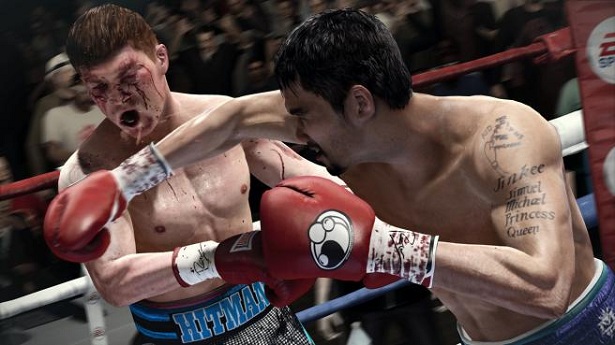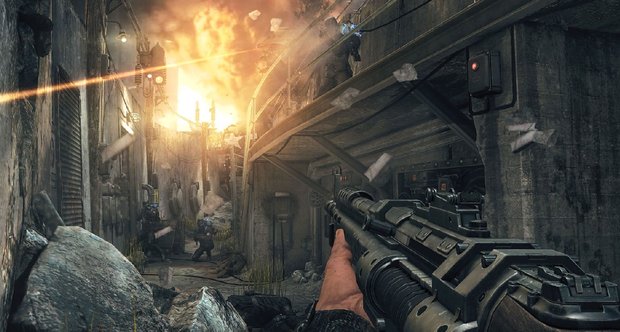

Game Rant’s Jeff Schille reviews Final Fantasy XIII-2
From the earliest days of console role-playing games, titles produced in Japan have both defined and dominated the genre. The importance of Yuji Horii’s seminal Dragon Quest cannot be overstated, but no series did more to spread the international popularity of JRPGs than Hironobu Sakaguchi’s Final Fantasy.
Starting last generation, a shift began to take place. Studios like BioWare and Bethesda — both veterans of PC development — delivered titles that redefined just what console role-playing games could be. Ask today’s average North American gamer what her favorite RPG is, and you are far more likely to hear The Elder Scrolls or Mass Effect than anything from Japan.
This shift in RPG tastes coincided with a difficult period for Square Enix. The mixed reception to Final Fantasy XIII, and the slow-motion train wreck of Final Fantasy XIV, conspired to “greatly damage” the brand. Final Fantasy XIII-2 is the series’ shot at redemption. Does the game successfully update the Final Fantasy formula for modern players? Read on for our full review of Final Fantasy XIII-2.
Though it is a direct sequel to Final Fantasy XIII, Final Fantasy XIII-2 smartly does not count on players being familiar with that divisive game. Accessibility is a clear design goal of Final Fantasy XIII-2, from its battle system to the wealth of information offered in its Datalog menu, and players deterred by having not completed the first game will be missing out on an experience that easily competes with the best RPGs available.
Over the months leading up to Final Fantasy XIII-2’s release, Square Enix issued a frankly staggering number of trailers for the game. That abundance of sneak peeks does nothing to blunt the impact of FFXIII-2’s remarkable visual presentation. The game’s engine is astonishingly nimble, able to seamlessly move between rendered footage, in-engine cut-scenes and gameplay.
While Final Fantasy XIII-2 is jam-packed with screen-filling pyrotechnic spectacles of color and light, it is the game’s characters that leave the most vivid impression. Characters look simply fantastic throughout, with flowing hair and elaborate costumes and weapons. Textures are often astounding — facial details, particularly lips and eyes, are especially impressive. But it is not just technical excellence that sets Final Fantasy XIII-2’s visuals apart from the competition, it is the artistry of their execution.
The game’s characters, highlighted by protagonists Noel and Serah, have tremendously expressive faces. There are no dead-eyed automatons here, and the game neatly avoids any uncanny valley creepiness. Final Fantasy XIII-2’s story frequently shifts tone from whimsical to deadly serious, and the performances of the central characters always keep pace.
It’s not just the properly lip-synced dialog or the natural body language or the clarity of the emotions reflected on the characters’ faces, but also the cinematic camera work and the exceptional voice acting (especially from Spirited Away’s Jason Marsden as Noel and Darksiders‘ Liam O’Brien as Caius) that makes Final Fantasy XIII-2’s cast so believably alive. Though it could not be more aesthetically different, only Uncharted 3 compares where character performances are concerned.
The game’s audio landscape is every bit as impressive as its visual assault. Cocktail jazz, orchestral bombast, and a convincing approximation of death metal (“Do it!”) all have a place in FFXIII-2’s aural spectrum, along with simple, melancholy piano and an explosive range of sound effects. Many games use music in an effort to amplify the emotional resonance of their onscreen action. Where others try, Final Fantasy XIII-2 succeeds.
The game’s audiovisual excellence is backed-up by a flexible, engaging turn-based battle system that offers a huge amount of depth, but does not require that players dedicate themselves to micro-managing every aspect. Again, accessibility is the rule. Players can assign custom roles to their characters and specify each individual attack. Alternately, they can allow the game to manage that for them, and simply rely on the “Auto-Chain” command.
Monsters defeated in battle can be recruited to fight alongside Serah and Noel, and can be leveled up just like the main characters. Finding and training new battle companions adds an undeniably Pokemon-esque element to the game that remains fun throughout. It helps that those monsters show a great deal of personality, and are often endearingly goofy, from Chocobos to the many iterations of flan — yes, flan, the caramel-topped custard — that appear (Flanbanero, Flanborg, Flandit, Flanitor, Miniflan… it’s a long list).
Battles are random, but not unavoidable. Players can choose to flee from monsters once they’ve appeared, though there is a benefit to landing the first blow, and a penalty should monsters do the same. That said, for long stretches of the game, there are many, many battles to contend with, and avoiding too many of them will leave players ill-equipped to face the gauntlet of bosses that await at the story’s end.
Final Fantasy XIII-2’s complex story is revealed gradually, and centers on Serah’s search for her sister, Lightning, who is lost not in space, but in time. It’s a novel and productive framework for the game, and the designers at Square Enix make the most of it. As Serah and Noel use the Historia Crux to travel through time, they revisit familiar locations at varying points in history, often to find stark differences — a peaceful and friendly locale in one time may be dark and dangerous in another.
Although destinations in time must be unlocked, players are free to explore available locations at will. Occasionally, this freedom makes it difficult to discern the path forward, though exploration has its rewards. In addition to the twisting central story, Final Fantasy XIII-2 is packed with optional side-quests, not unlike, say, Kingdoms of Amalur: Reckoning. Those side-quests occasionally span multiple points in time, and cannot all be completed when first encountered, adding yet more playtime to an already long game.
The density of Final Fantasy XIII-2’s story can be intimidating. There is a degree of built-in ambiguity in the fragmented nature of the storytelling, and the central characters’ evolving understanding of exactly what is transpiring — to say nothing of the changes wrought by tampering with the timeline. What is important is that the story consistently connects emotionally — once again, thanks largely to the game’s amazing character work — and that the disparate story threads do come together to form a deeply satisfying whole.
Square Enix has been upfront about its intention to extend Final Fantasy XIII-2’s story with downloadable content, and it is widely known that the game ends with the words “To Be Continued.” Without giving away any specifics, I will offer this: Final Fantasy XIII-2 tells a complete tale and ends at a logical point. The events that set up the “To Be Continued” tag flow directly from the game’s story. In short, it’s more The Empire Strikes Back than Harry Potter and the Deathy Hallows: Part 1.
If ever there were a game that deserved to resurrect the reputation of its franchise, this is it. More than just an update to a well-established formula, Final Fantasy XIII-2 is vital and modern, and deserves to be the blockbuster it was designed to be. Emotionally engrossing, technically dazzling, and deeply playable, Final Fantasy XIII-2 delivers the goods, and is highly recommended.
Final Fantasy XIII-2 is available now on PS3 and Xbox 360. Game Rant played the PS3 version for this review.
–
Follow me on Twitter @HakenGaken



